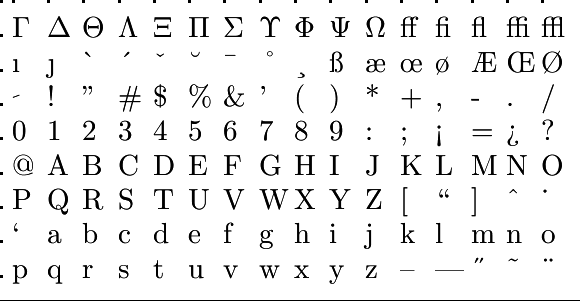In present value we've taken a look at the present value (PV) of a future amount in a savings account with compound interest. We can also consider the present value of a situation where a payment is made each time period (for example each year). Such a situation often occurs with a loan.
An example asking for a present value is: "Assume that for #20# years each December 30th a payment of #\euro \, 1603.68# is done to pay off a loan. Calculate how much debt needs to be paid off, assuming an interest of #2.5\%# per year."
The present value of a series of installment payments #P# at growth rate #i# and #n# terms is
\[PV=P \cdot \frac{1-(1+i)^{-n}}{i}\]
There's a total of #n# installment payments worth #P# each. The loan is taken out at the start. Each payment consists of two parts: one part is to pay back the loan, the rest is payment of interest. If we start with the installment of the loan taken out in the first term, we find that the loan, meaning the initial loan amount, is equal to
\[PV=P \cdot \frac{1}{1+i} + P \cdot \frac{1}{(1+i)^2} + \cdots + P \cdot \frac{1}{(1+i)^{n-1}} + P \cdot \frac{1}{(1+i)^n}\]
We can recognize this as a geometric sequence. In here the first term is equal to #P \cdot \frac{1}{1+i}# and the scale factor is #\frac{1}{1+i}#.
(We can also choose the first term to be #P \cdot \frac{1}{(1+i)^n}# and the scale factor as #1+i#. The calculation will be different, but the result will be the same.)
The formula for the sum #s_n# of the first #n# terms of a geometric sequence #t# is equal to
\[s_n =t_1 \cdot \frac{r^n-1}{r-1}\]
where #t_1# is the first term which in this case equals #P \cdot \frac{1}{1+i}#. Next #r# is the scale factor which is equal to #\frac{1}{1+i}#. Finally #n# is the number of terms, in this case it remains equal to #n#.
\[PV = P \cdot \frac{1}{1+i} \cdot \frac{\left(\frac{1}{1+i}\right)^n-1}{\frac{1}{1+i}-1}\]
This can be rewritten like this:
\[\begin{array}{rcl}
PV &=&P \cdot \frac{1}{1+i} \cdot \frac{\left(\frac{1}{1+i}\right)^n-1}{\frac{1}{1+i}-1}\\ &=& P \cdot \frac{\left(\frac{1}{1+i}\right)^n-1}{1-(1+i)}\\
&& \phantom{xxxxx}\color{blue}{\text{ fractions multiplied by each other}}\\
&=& P \cdot \frac{\left(\frac{1}{1+i}\right)^n-1}{-i}\\
&& \phantom{xxxxx}\color{blue}{\text{denominator simplified}}\\
&=& P \cdot \frac{1-\left(\frac{1}{1+i}\right)^n}{i}\\
&& \phantom{xxxxx}\color{blue}{\text{numerator and denominator multiplied by }-1}\\
&=& P \cdot \frac{1-\left(1+i\right)^{-n}}{i}\\
&& \phantom{xxxxx}\color{blue}{\text{rule of calculation }\left(\frac{1}{x}\right)^a=x^{-a}}\\
\end{array}\]
The factor with which #P# needs to be multiplied, is also indicated with #a_{\left .n\right \rceil i}#. Hence, \[a_{\left .n\right \rceil i}=\frac{1-(1+i)^{-n}}{i}\]
In the software package Excel this one is indicated with PV (Present Value) under the financial functions.
Please note: in this case we're looking at the situation in which the interest payments are made at the end of the period (either paid or received) This is called annuity immediate interest. For the calculation of interest it does matter if the interest is calculated at the end or at the beginning of a term. We will see to this later. For now, we will only look at the situation where the term is at the end of a period.
Please not that all time periods are equal in the exercises. Hence, is the terms are yearly, then the growth rate also needs to be yearly. Just as when the terms are monthly, then the growth rate must also be monthly.
Getting back to the question:
Assume that for #20# year each December 30th a payment of #\euro \, 1603.68# is done to pay off a loan. Calculate how much dept needs to be paid off, assuming an interest of #2.5\%# per year.
The present value is the sum over all periods of the payments towards the initial loan per term #P#. In period #k# that payment is the amount #B_k# which after #k# years, leads to the term #(1+i)^k\cdot B_k = P=1603.68#. This means that the payment toward the original loan in period #k# is equal to #B_k= \frac{P}{(1+i)^k}= \frac{1603.68}{\left(\frac{1025}{1000}\right)^k}#. This is the present value of the payment in period #k#. Hence, the present value is the sum from #k=1,\ldots,20# to # {1603.68}\cdot {\left(\frac{1000}{1025}\right)^k}#. According the formula this is equal to
\[PV =1603.68 \cdot \frac{1-\left(\frac{1000}{1025}\right)^{20}}{0.025}\approx 25000.03\]
We conclude that this is a total loan of #\euro \,25000#, rounded to whole euros.
We will take a look at some examples in which a present value is calculated.
Calculate the present value of a loan consisting of #22# yearly terms each #\euro \, 5800# on the basis of equal interest of #2\%# per year. The first payment has to be done in exactly one year.
The present value is: #\euro# #102416.68#
The formula for calculating the present value is: \[PV = P \cdot \frac{1-(1+i)^{-n}}{i}\]
where
- #P# is the payment per term: #P=5800#
- #n# the number of terms that need to be paid: #n=22#
- #i# the growth rate: #i=\frac{2}{100}=0.020#
This gives us
\[PV=5800 \cdot \frac{1-(1+0.020)^{-22}}{0.020}\approx 102416.68\]
 Present value of a loan
Present value of a loan




